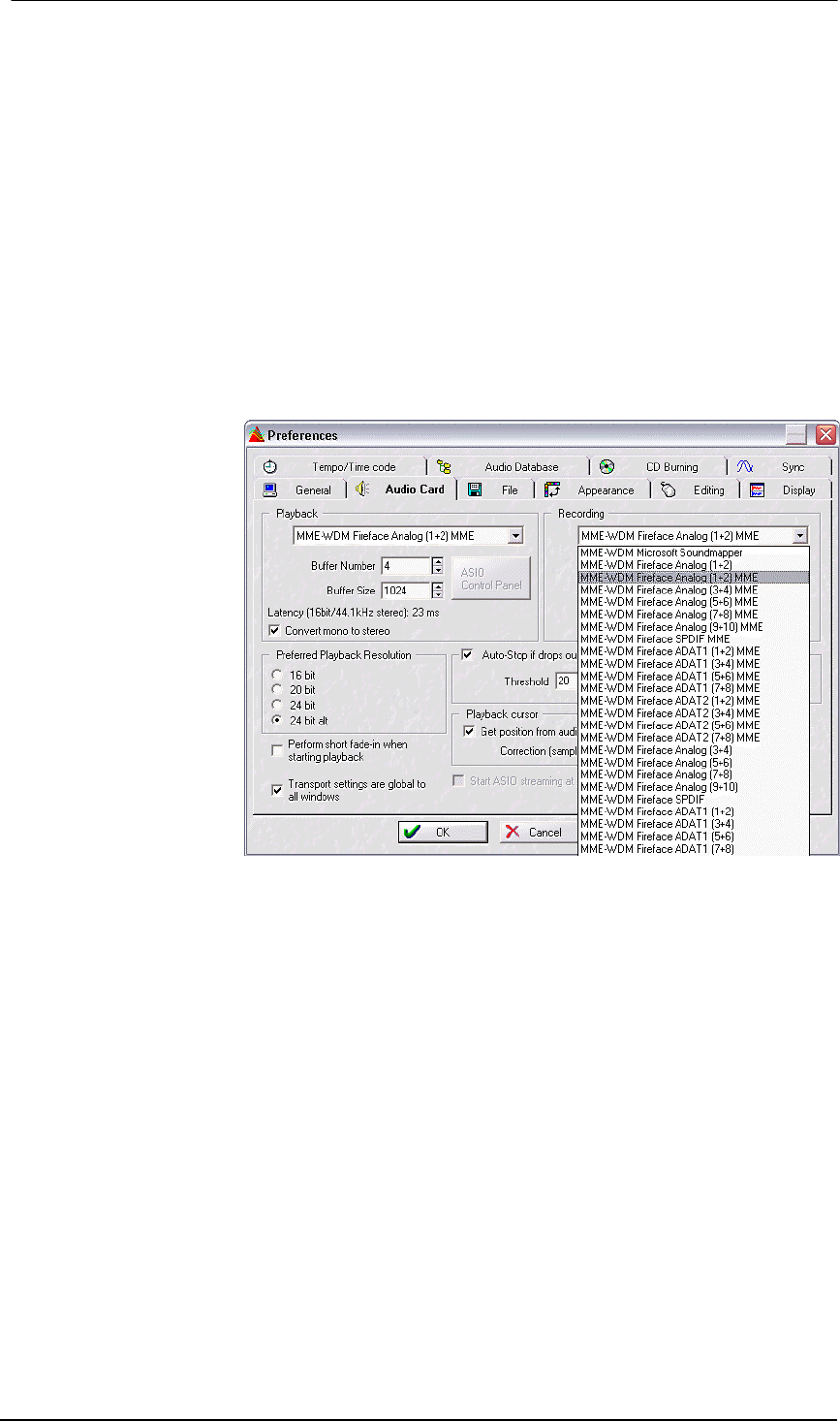
24
User's Guide Fireface 800 © RME
12. Operation and Usage
12.1 Playback
The Fireface 800 can play back audio data in supported formats only (sample rate, bit resolu-
tion). Otherwise an error message appears (for example at 22 kHz and 8 bit).
In the audio application being used, Fireface must be selected as output device. This can often
be found in the Options, Preferences or Settings menus under Playback Device, Audio Devices,
Audio etc.
We strongly recommend switching all system sounds off (via >Control Panel /Sounds<). Also
Fireface should not be the Preferred Device for playback, as this could cause loss of synchroni-
zation and unwanted noises. If you feel you cannot do without system sounds, you should con-
sider buying a cheap Blaster clone and select this as Preferred Device in >Control Panel
/Multimedia /Audio<.
The screenshot shows a
typical configuration dia-
log of a (stereo) wave
editor. After selecting a
device, audio data is sent
to an analog or digital
(ADAT / SPDIF) port,
depending on which has
been selected as play-
back device.
Increasing the number
and/or size of audio buff-
ers may prevent the au-
dio signal from breaking
up, but also increases
latency i.e. output is de-
layed. For synchronized
playback of audio and
MIDI (or similar), be sure
to activate the checkbox ‘Get position from audio driver’.
The Fireface’s ADAT optical interfaces support sample rates of up to 96 kHz using a standard
ADAT recorder. Single-channel data at this frequency requires two ADAT channels, achieved
using the Sample Multiplexing technique. This reduces the number of available ADAT channels
from 8 to 4. Under Windows MME, channels are routed to ADAT devices in double-speed mode
as follows:
• Only the four stereo pairs of the device ADAT1 are available
• The channels of the device ADAT2 are no longer available
This kind of implementation allows a problem-free usage of both ADAT ports in Single and Dou-
ble Speed, as the routing for ADAT1 doesn't change. However, the hardware spreads the data
differently:
• Channel 1 is transmitted via channels 1 and 2, channel 2 via 3 and 4 etc.
• The ADAT2 port transmits channels 5 to 8
Please refer to the diagram in chapter 18.2. Routing for record and playback is identical.
